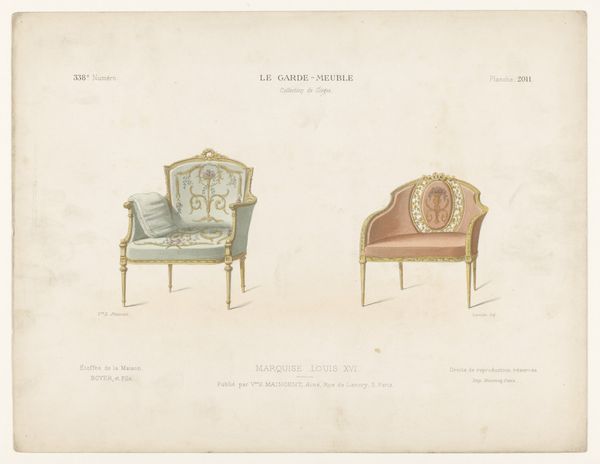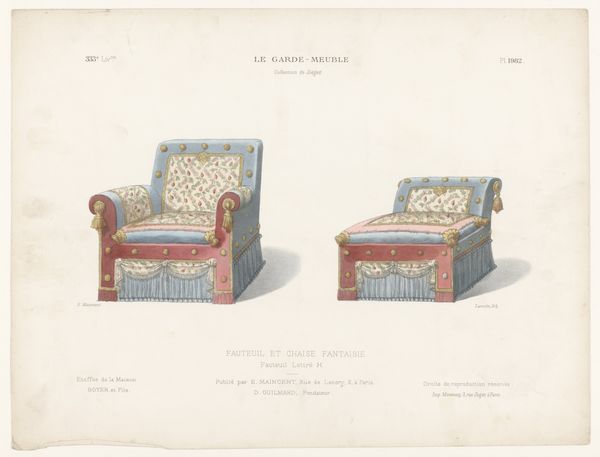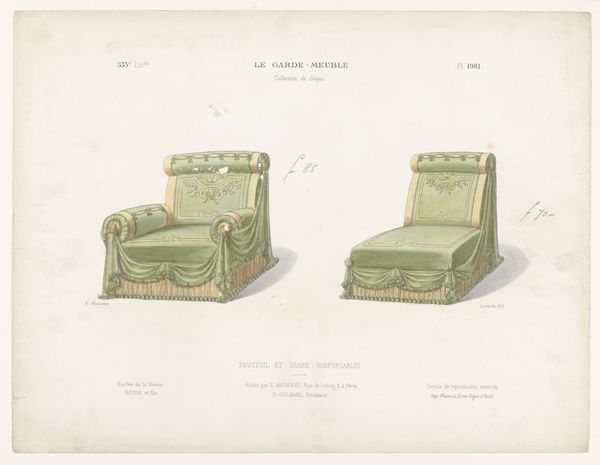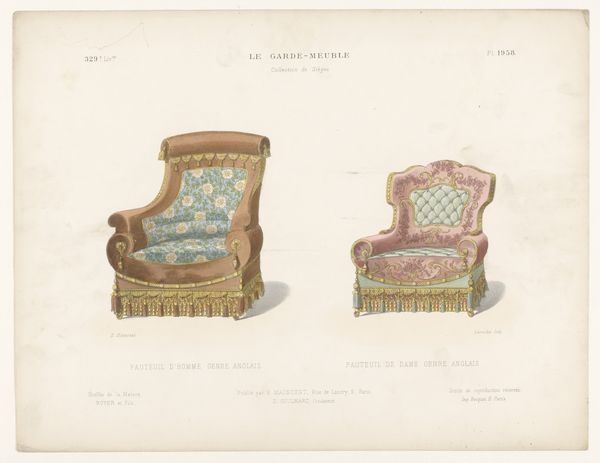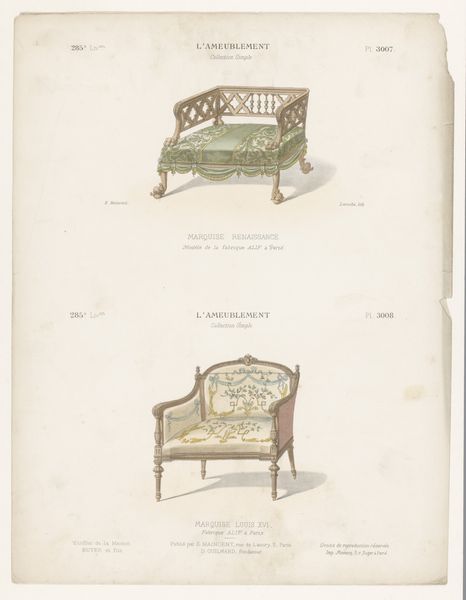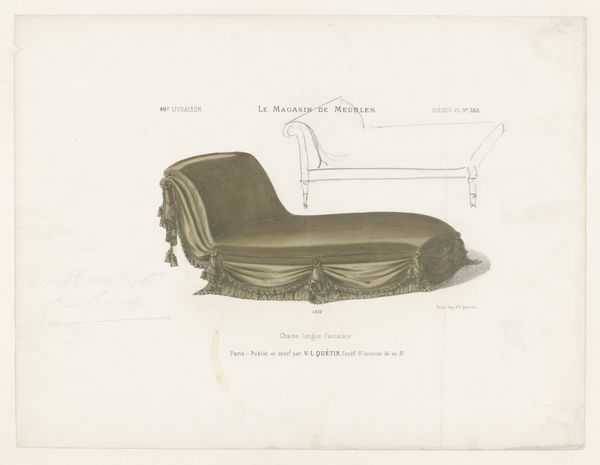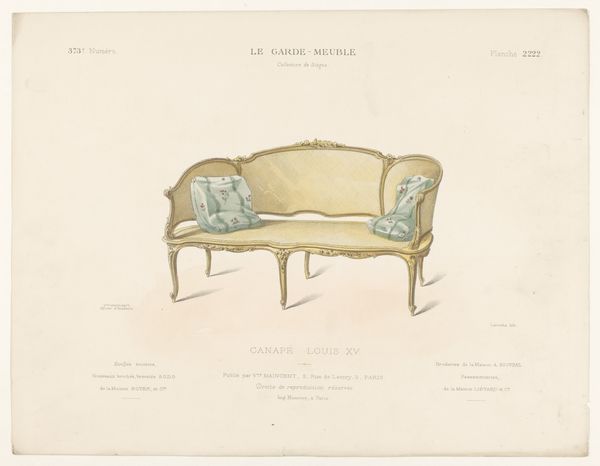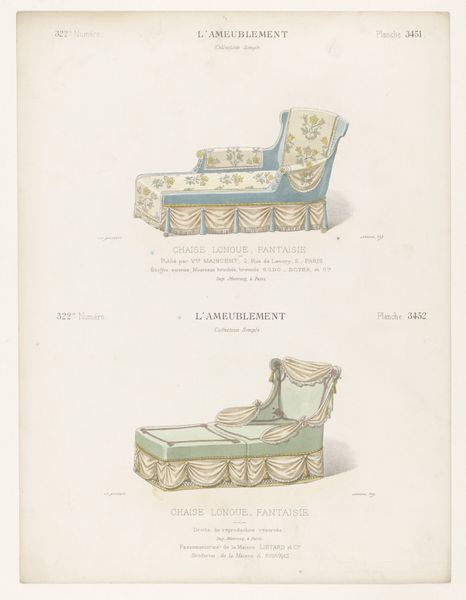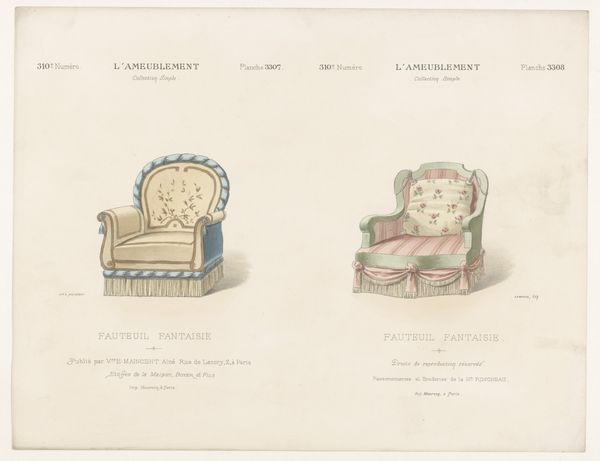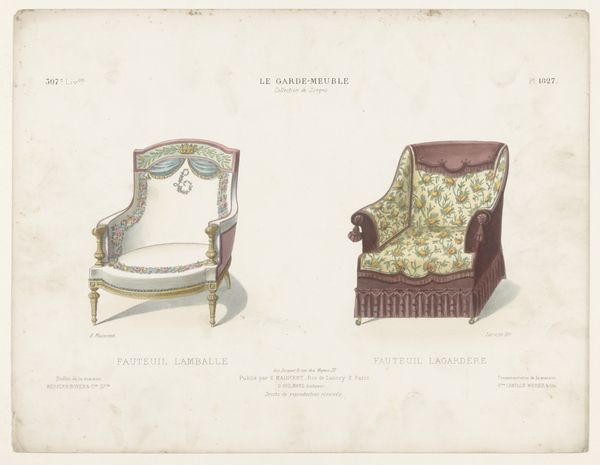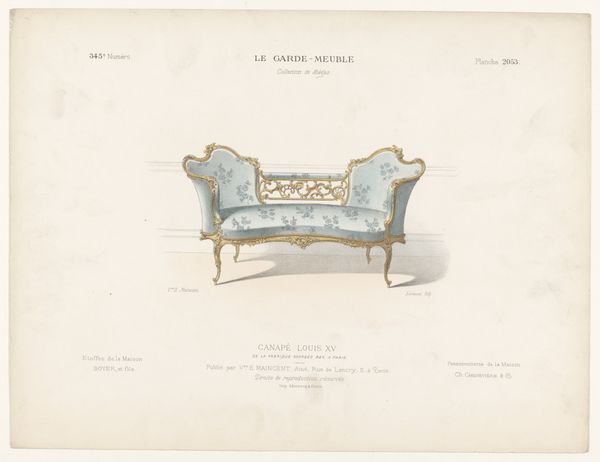
drawing, graphic-art, print
#
portrait
#
drawing
#
graphic-art
#
art-nouveau
# print
#
decorative-art
Dimensions: height 275 mm, width 357 mm
Copyright: Rijks Museum: Open Domain
Curator: Here we have Lèon Laroche’s "Two Chairs," a print from between 1885 and 1895 showcasing designs in the Art Nouveau style. It has a delightful quaintness about it. Editor: My eye is drawn immediately to the contrast between the two chairs. The cool green chair on the left seems heavily ornamented and formal, while the mauve lounger on the right feels more intimate and approachable, perhaps designed for more casual repose. Curator: Indeed. Look at how Laroche employs line and texture to differentiate them. The geometric precision of the left chair contrasts with the flowing, almost languid form of the right. Consider, too, the density of the graphic detailing—see how closely the intricate patterns interlock. Editor: I’m more fascinated by the material implications. Those fringes, that velvet-like sheen; what types of labor and industrial processes were required to manufacture these objects? It suggests a very specific intersection of class and taste. These objects certainly speak to late nineteenth-century Bourgeoisie. Curator: An astute observation. The ornamentation directs our eye towards structure, underscoring the artist's interest in how pattern and form converge. One might explore how the negative space around the chairs further accentuates their individual profiles, as studies in shapes that become function. Editor: But wouldn’t we agree that the intention, or at least the imagined utility, extends beyond pure functionality? These chairs are meant to be consumed, signaling comfort and belonging, yes? One produced using industrialized labor while the other, maybe, using traditional techniques? Curator: Possibly. And yet, observe how the very flatness of the print media emphasizes surface over depth. It abstracts them, inviting us to reflect on chairs as representations, almost ideal forms, rather than objects to sit upon. Editor: In that regard, I find myself questioning whether it prioritizes an aesthetic representation disconnected from the production, that seems like an avoidance, an idealization... Curator: An intriguing way to think about the function of "display" as it relates to manufactured luxury. Editor: Precisely! The work makes one consider value – in both aesthetic and economic terms. I leave pondering that interaction of artistic and industrialized ingenuity.
Comments
No comments
Be the first to comment and join the conversation on the ultimate creative platform.
